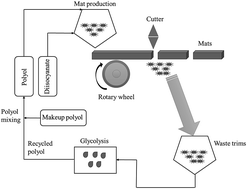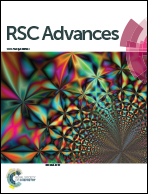Polyurethane types, synthesis and applications – a review
Abstract
Polyurethanes (PUs) are a class of versatile materials with great potential for use in different applications, especially based on their structure–property relationships. Their specific mechanical, physical, biological, and chemical properties are attracting significant research attention to tailoring PUs for use in different applications. Enhancement of the properties and performance of PU-based materials may be achieved through changes to the production process or the raw materials used in their fabrication or via the use of advanced characterization techniques. Clearly, modification of the raw materials and production process through proper methods can produce PUs that are suitable for varied specific applications. The present study aims to shed light on the chemistry, types, and synthesis of different kinds of PUs. Some of the important research studies relating to PUs, including their synthesis method, characterization techniques, and research findings, are comprehensively discussed. Herein, recent advances in new types of PUs and their synthesis for various applications are also presented. Furthermore, information is provided on the environmental friendliness of the PUs, with a specific emphasis on their recyclability and recoverability.


 Please wait while we load your content...
Please wait while we load your content...